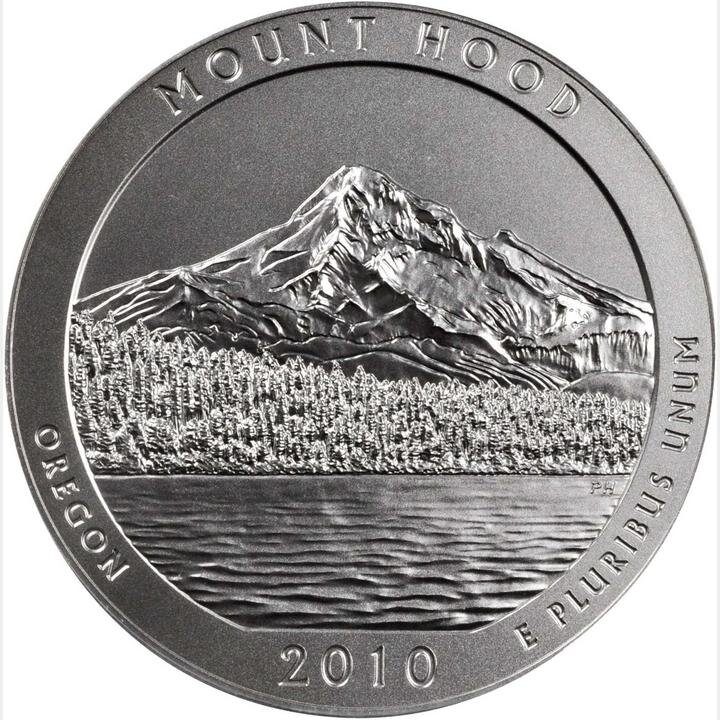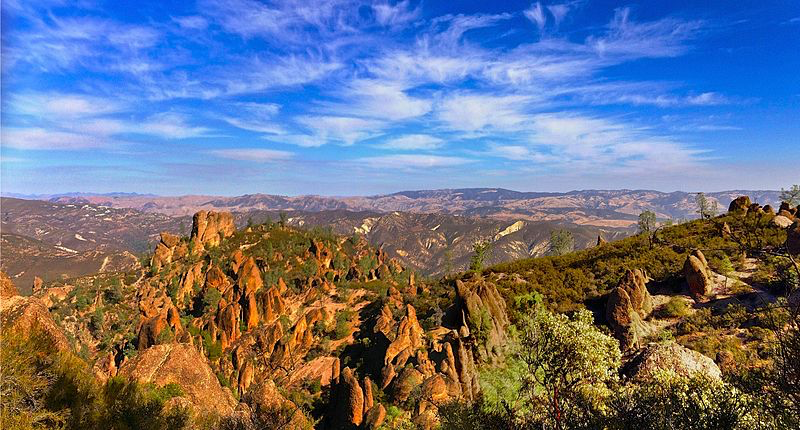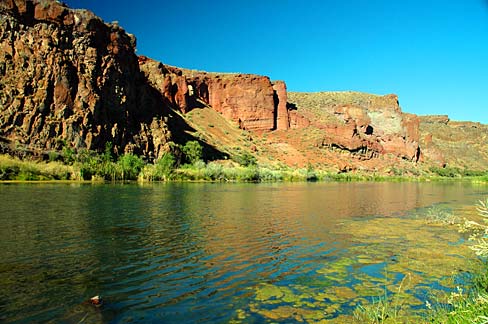When political realities come up against ecological realities, the former must be changed because the latter cannot.
Read MoreAbout That Vision Thing

National Park System
When political realities come up against ecological realities, the former must be changed because the latter cannot.
Read MoreBig Timber’s and Addicted Counties’ supreme gambits to gut the Cascade-Siskiyou National Monument have failed, but the monument is still in mortal peril from the Bureau of Land Management.
Read MoreThis Part 3 suggests ways to partially—but significantly—bring back the magnificent old-growth forests that have long been lost.
Read MoreUnderstanding the history of public lands is useful if one is to be the best advocate for the conservation of public lands.
Read MoreLegislation has been introduced to conserve and restore one of the most colorful natural landscapes in Oregon for the benefit of this and future generations.
Read MoreFigure 1. Graffiti by me. I’m not going there yet but may have to. Source: Forest Stewardship Council-US.
So far, I have happily recommended FSC-certified tree flesh to those who have asked (and commended to those who haven’t). However, if any federal forest lands are certified by the FSC, I will no longer be able to recommend FSC-certified wood as I cannot be assured that the FSC label means the wood product didn’t come from the logging of older (mature and old-growth) forests on federal public forest lands.
Read MoreIf not for the Cold War (1945–1991), there might well have been a national park in Oregon’s Cascade Mountains.
Read MoreCrown Zellerbach timber executive: “We knew in the 1950s we had to log it then, or it would be a national park by now.”
Read MoreI am bearish on the prospect of establishing any new national parks in Oregon, save perhaps one that would be a hell of a long shot. I am semi-bullish on the possibility of modest additions to Oregon’s only national park. But I am bullish on the chances of designating several new National Park System units in Oregon.
Read MoreNo new national park proposal in Oregon has made it past the finish line since the establishment of Crater Lake National Park in 1902. Oregon’s only national park has had two very modest additions since then, in 1932 and in 1980.
Read MorePart 2 discusses multiple failures to establish additional national parks in Oregon.
Read MoreThere are national parks and then there are other units of the National Park System—all administered by the National Park Service. The United States has 62 national parks. It has another 357 units that are also part of the National Park System but go by another name (national whatevers). Herein we focus on the one national park in Oregon.
Read MoreIn 2019, Senator Ron Wyden and Representative Earl Blumenauer met with various stakeholders at Timberline Lodge to discuss the future of greater Mount Hood. Senator and Representative: What’s your plan?
Read MoreVery high on my bucket list is to see a California condor in the wild (Figure 1), ideally over Oregon. If my timing is good and the condors cooperate, this could happen.
Read MoreFig. 1. Crabtree Lake in Crabtree Valley, which contains some of the oldest trees in Oregon, is in the proposed Douglas Fir National Monument, located in Oregon’s Cascade Mountains. Source: David Stone, Wildlands Photography. Previously appeared in Oregon Wild: Endangered Forest Wilderness (Timber Press, 2004), by the author.
Less than a week after President Trump signed the Oregon Wildlands Act into law (as one of many bills in the John D. Dingell, Jr., Conservation, Management, and Recreation Act), Senator Ron Wyden (D-OR) and Representative Earl Blumenauer (D-3rd-OR) convened an Oregon Public Lands Forum on Monday, March 18, 2019.
Read MoreWhile the how, when, where, and why of mining on federal public lands is important (see Part 1), at least as important is where notto mine on federal public lands. These include places where the public’s interest in the conservation of natural, historical, and cultural values outweighs the value of any minerals that might be had, places that have been reserved for the benefit of this and future generations rather than for the benefit of today’s corporation.
Read MoreSeveral mostly good public lands conservation bills have been introduced in the 115th Congress (2017–18) but languish in committee, unable to get a vote on the floor of the House or the Senate.
Read MoreIn early January 2018, the National Park Service instituted a new parking reservation system for Muir Woods National Monument near San Francisco. Actually, it is more accurate to say “for Muir Woods National Monument in the San Jose-San Francisco-Oakland, CA Combined Statistical Area (CSA).” The 554-acre national monument includes 240 acres of magnificent old-growth coast redwood forest. An estimated 1.2 million people visit each year, drawing mainly from the ~8.8 million and increasing humans of greater San Francisco. The mere 232 parking spaces just cannot handle the crowds anymore. It will now cost $8 per vehicle, along with the $10 entrance fee, to park your car if you want to take in Muir Woods. If you don’t plan far enough ahead, you might be able to catch a shuttle ($3) from downtown Sausalito, but those require reservations as well. Farewell, dear spontaneity.
Mount Hood from Lost Lake, which has not been lost for a very long time. Source: Gary Halvorson, Oregon State Archives
Though four presidents expanded Muir Woods National Monument after Theodore Roosevelt set aside the first 295 acres in 1908, the expansion of the monument has not kept up with the expansion of the nearby population. It’s not like there are adjacent stands of majestic old-growth coast redwoods next door just waiting for inclusion in the monument. Naturally, the coast redwood has a very limited range on Earth (about two million acres in a narrow strip from just south of Big Sur to just north of the Oregon-California border, with 95 percent having been clear-cut).
The National Park Service is doing similar rationing in Yosemite and Haleakala National Parks and is considering the same for Zion and Arches National Parks.
There are two overarching reasons to conserve, restore, and increase the acreage of public lands:
· to provide for the adequate functioning of ecosystems and watersheds across the landscape (and seascape) and over time so as to provide the vital goods and services that only nature can provide to this and future generations
· to allow this and future generations adequate opportunities to directly and indirectly engage in recreational (pronounced “re-creational”) pursuits that support and renew the mind, body, and soul
The former—the provision of adequate nature for ecosystem functioning—is extremely difficult but not impossible. The latter—the provision of adequate nature for recreation—is not only extremely difficult but also may be impossible if the human population continues to grow like cancer.
Providing Adequate Nature: Supply and Demand Problems
As to the amount of land and water humans need to conserve and restore in order to provide for nature and her vital goods and services, Harvard biologist E. O. Wilson makes a compelling case in his greatest book, Half-Earth: Our Planet’s Fight for Life. Wilson’s recommendations come through the lens of species requirements. To exist, species need what they need. It’s not negotiable.
Regarding the provision of adequate nature for recreation, it’s not so much a supply problem as a demand problem. Increasingly, there are too many humans seeking to recreate in the same places at the same time. To a degree, more public lands could be reclaimed for recreational purposes, but, hopefully, not at the expense of the first overarching reason. More national recreation areas should be established on public lands (here is a list of some that and could be established in Oregon) and more private lands should be reconverted to public lands upon which to put more recreation areas. However, demand for natural recreation areas outstrips supply both because demand is out of control and because supply is inherently limited.
In general, there are too many people on Earth for our own collective good, and it’s getting worse. Human population continues to further outstrip the long-term carrying capacity of air, water, and land—and even the human requirement for elbow room. Unless this growth is soon stopped and then reversed, all bets are off.
The supply of natural recreation areas is inherently limited by considerations of both proximity and uniqueness. Most humans live in cities, and there is only so much land and water that can be used for human recreation. While I benefit greatly from knowing that the vast Brooks Range in northern Alaska is there, I—and most others—won’t be visiting it. Instead we mostly tend to visit natural recreation areas closer to home. With regard to uniqueness, there is only one Mount Hood near the Portland-Vancouver-Salem, OR-WA CSA and only one Mount Rainier near the Seattle-Tacoma-Olympia, WA CSA. Conjuring up another Cascade peak to satisfy the demand for natural recreation is not possible.
Negotiating Increasingly Crowded Spaces
The Oregon I grew up in and am growing old in used to be a lot less crowded. Over the decades my enjoyment of natural recreation areas has been a negotiation, mainly in the form of strategic retreat and lowered expectations. For example, in my youth, one could reasonably expect a hot spring in the western Cascades, and certainly in Oregon’s Sagebrush Sea, to be uncrowded. Today, a visit to a forested hot spring near the Willamette Valley will be an overcrowded experience.
To get the solitude that to me and many others is a vital part of natural recreation, I started shifting my recreation in both time and space. For a while, if I went to hot springs during the week, and then late at night (or even better, early in the morning), and then finally in the dead of winter during heavy rains or snow, I could obtain the requisite solitude. There were also hot springs that were an eight- to ten-hour drive from the Willamette Valley, accessible by relatively poor roads, where I could find solitude. That worked for a while, but the crowds from LaBendmondville (aka the Bend-Pineville CSA)—which is nothing more or less than the present easternmost demographic extent of the Willamette Valley—discovered not only those hot springs but also those lava caves, fault-block ranges, post-Pleistocene lakes and other recreational attractants of Oregon’s Sagebrush Sea.
In 2000, I helped persuade Congress to extend special protections to Steens Mountain (background). We tried to include the vast desolately enchanted landscape to the each, including Mickey Hot Springs (foreground), but had to settle for a mere mineral withdrawal. At least there will never be geothermal exploitation of Mickey and several other other springs. Source: Bureau of Land Management.
In response to increasing overpopulation, what came to Muir Woods will eventually be coming to a natural recreation area near and/or dear to you. But actually, reversing overpopulation is not that hard. If all those who wanted children would limit themselves to two, what is now out of control could soon be back in control.
The originations of 25 of our 59 national parks, totaling 39.6 million acres, were first seeded by the establishment of a presidentially proclaimed national monument. Fourteen of these monumental 25 were established from more than one national monument proclamation, in that were expanded by later presidents.
Read MoreThe Owyhee Canyonlands in Oregon are worthy of inclusion in the National Park System, administered by the National Park Service. Now that would be local economic development! The Owyhee Canyonlands are worthy of designation by Congress as an overarching national conservation area with underlying wilderness and wild and scenic rivers where appropriate. The Owyhee Canyonlands are not deserving of a half-assed mineral withdrawal that locks in other harmful uses.
Read More














